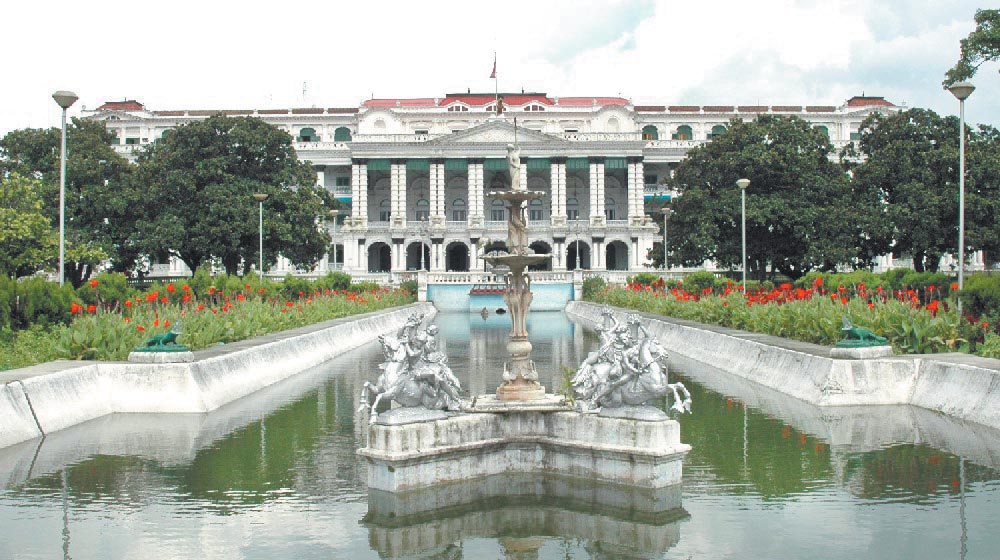Main complex of Singha Durbar to be rebuilt
Kathmandu, December 1
The government plans to initiate reconstruction of the main complex of Singha Durbar without any further day.
The historical and iconic portion of the government’s administrative headquarters was damaged in the earthquakes last year. The Office of the Prime Minister and Council of Ministers was shifted to a safer place within Singha Durbar premises as the building suffered multiple cracks in its facade and elsewhere.
The OPMCM today held a meeting with concerned authorities and decided to carry forward the reconstruction process after Prime Minister Pushpa Kamal Dahal expressed concern about the delay in recovery works of the landmark and directed them to do needful at the earliest.
Tankamani Sharma, secretary at the OMPCM; Shambhu KC, acting secretary at the Ministry of Urban Development; Ram Chandra Dangal, chief of Singha Durbar Reconstruction Project; and Bhesh Narayan Dalal, director general at the Department of Archaeology, among others, attended the meeting. They said reconstruction could be completed within a year.
“We need to carry out reconstruction works by pulling down its facade, the most-affected portion,” a press statement issued by the PM’s Secretariat quoted the officials.
Secretary Sharma directed the officials to work on the reconstruction process beginning tomorrow. “Before restoration, it is necessary to scientifically ascertain which portion should be demolished and which repaired to resume the office and give it a previous look,” he said.
The rear portion of the historical palace has not sustained major damage. Earlier, the DoA had urged the government not to demolish the facade but renovate it using traditional methods as demolition could kill its original artistic form. The officials are set to hold next meeting tomorrow to prepare a final action plan.
The government has decided to bring the building back to its original form both by demolishing and retrofitting as may be required. The building would also house the State Hall and National Planning Commission.
Designed in neo-classical design, the palace boasted of over 1,000 rooms arranged around seven quadrangles and was among the largest buildings in South Asia before its front wing was destroyed by massive fire in 1973.





